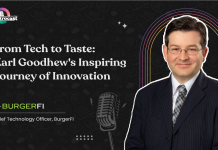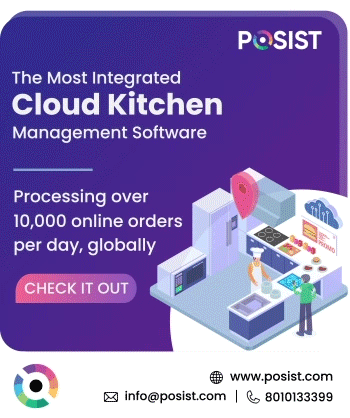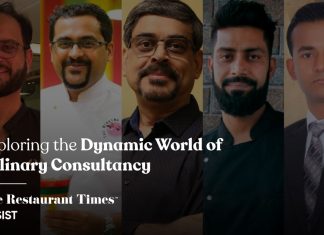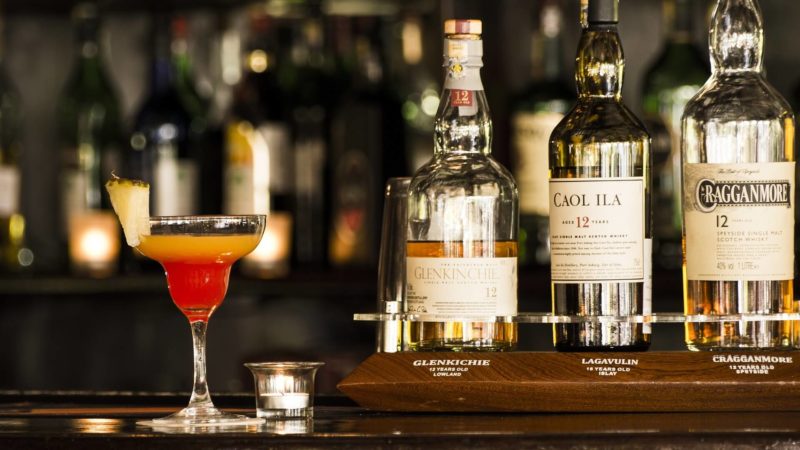goSTOPS is India’s fastest-growing and largest backpackers hostel brand with a presence in 33 locations across India. goSTOPS provides pocket-friendly social accommodation and quality travel experiences to the millennials and Gen-Z. With over 3000 beds, the brand has a presence in some of the major tourist destinations of India and has hosted over 5 lakh guests across its properties. The CEO and Founder, Pallavi Agarwal is a travel enthusiast.
The idea of building goSTOPS came to Pallavi, when she was backpacking through Europe in 2012 with her husband Pankaj Parwanda, who is also the Co-Founder of goSTOPS. Fascinated by the collaborative, social environment that the hostel packs, Pallavi realized that similar accommodation options are much needed in India. While India is a country with the largest population of youth in the world, an accommodation option catering to their dreams and aspirations was squarely missing. And thus, the idea to build goSTOPS began, and after she returned back to India she started ideating the concept finally the first goSTOPS hostel opened its door to its guests in 2014.
Pallavi traveled across Europe with her husband in 2012 while backpacking and was immensely fascinated with the hostel culture there. They instantly wondered why an equivalent system for tourists looking for premium quality communal lodgings did not exist in India. Thereafter, she decided to start her hostel chain and open the first hostel in Varanasi because the city is known to draw both domestic and international travelers.
In conversation with Pallavi Agarwal, CEO – goSTOPS
goSTOPS opened its doors in 2014 based on a simple belief that travel changes lives. When you travel more, you ‘be more’. Whether you’re braving your first solo train ride or finding a kindred spirit in a complete stranger, you will always be left with a head full of memories that will help you coast along till the next trip.
In an exclusive conversation with The Restaurant Times, Pallavi shares insights about the journey of building a brand loved, inspired by, and created for people.
TRT – What led you to start a backpacker hostel chain in India, and how did you get the idea of starting goSTOPS?
Pallavi – So, I was traveling in 2012 with a friend who was on a budget. He used to do a bi-annual trip to Europe because his girlfriend was Polish and was studying there. So he used to travel from India twice a year to meet her. And one day, he asked us to join along on one of these trips. We just said yes, unaware of the fact that he was going to put us up in hostels. I had no idea what hostels were until then. I only knew about hostels from some of the horror movies that I had seen, where people die. That was the only image in my mind when I thought about hostels.
Eventually, we backpacked across 5 countries in Europe and stayed in about 15 odd hostels. Surprisingly, I fell in love with the concept of what a hostel is. The star feature for me was the hostel community where you get a chance to meet other travelers and share your travel experiences. It was absolutely amazing and made me realize that India with such a huge youth population did not have any hostel which they can call their own. A vibrant space designed for the young people of the country.
So, when I returned to India, I knew that this is what I wanted to do and decided to quit my job. I loved what I was doing. I was a consumer behavior researcher. It was a tough decision but I had faith in my idea. Sure it took me some time but my mother pushed me by saying, “If you don’t do it today, you will not do it afterward too.” So, with firm belief and support from my parents, I started the first hostel in Varanasi. Today we are at 33 hostels across the country and still growing strong.
TRT – You know the hospitality industry was affected a lot and faced a lot of challenges during the pandemic. Tourism almost just vanished from everywhere. So how did you overcome those challenges during the pandemic? And how did you not only keep goSTOPS afloat and running but also managed to double your properties during the second wave with a 5x jump in revenue?
Pallavi – I think, like they say, “It takes a village to take care of a baby.” The same is true for a company. We just happen to have lovely stakeholders with us right from our investors to our team, as well as the property owners that we work with. When the pandemic hit and the lockdown happened around March 2020, all the stakeholders came together in order to make sure that we face this difficult time together. A lot of our property owners waived off the rentals because they knew there was no business coming in. However, it was crucial for us to take care of the properties and keep them maintained amidst all the chaos. Because I think a lot of players during the lockdown faced an issue where the properties were closed for a very long time and as a result, the asset depreciated. We wanted to avoid this situation.
All our properties had teams staying inside, taking care of it on a regular basis just like any other normal day in the hostel. We were maintaining it in full swing. From daily cleaning to pest control, we did it all so that the properties can be launched as soon as the lockdown is lifted. Luckily, besides financial support, our investors acted as a guiding light for us so that the company could stay afloat. We were also aware that the teams on the ground i.e the operations team were the worst affected because hotels were closed and a lot of people lost their jobs during that time.
However, we made sure our teams were well-remunerated during this time and kept paying their salaries while also maintaining the properties.
As an entire organization and all the stakeholders in it, we all came together and braced ourselves to get over this tough period. As we were catering to the young people, who are mainly 18–30 years old, we knew that as soon as the lockdowns are lifted they’ll be the first ones to start traveling. And fortunately, that’s exactly what happened. In August, when all the lockdowns were lifted, the hostels began filling up again. In fact, we noticed that most of the people were staying longer than before. Because people have been working from home and were cooped up indoors for 5–6 months, they made sure to stay for a longer period of time. They also didn’t want to go and spread any infection they might have caught while traveling to their older relatives.
We could see how youngsters were being responsible while traveling and eventually started staying for workstations in our hostels. We also started following all the COVID protocols in order to make sure that we reduce the possibility of infection.
At the same time, we realized that real estate was also affected by COVID. Many people had abandoned their lease agreements and hotel owners were looking for operators who would take over and start running their properties. And that’s how we took this opportunity and signed more properties at competitive rates, creating a profitable venture for the landlords, as well as for us. And that is how we utilized this time period to expand and continue growing.
TRT- Within this context, people find a home away from home and I think that food here plays a major role, as the home is where you know the food is. So what do you think about the role of F&B or say the role of food and beverage in making goSTOPS a success hit?
Pallavi – So we look at F&B slightly differently. You are absolutely right that food is an essential part of the accommodation, especially when people are staying for a longer period of time. Our food offerings have been very different from the very beginning because we wanted to run a uniform food offering across all our branches. The same menu is available across all our properties, and it’s available 24/7. So most of our food is sourced from centralized kitchens and then transported to most of our centers. These are either frozen or packaged food which is prepared at the best of facilities across the country and that’s frozen and sent to our branches so that we can revive it at the click of a button. So we can deliver the same consistent Dal Makhni or the same consistent Butter Chicken or the same consistent Kathi Rolls across all our centers.
So that is something that we started doing back then also, and we continue to do the same. The food has been tailored to the requirements of the young people because like I said, young people are 24/7 creatures and they have their own body clock. So they like to eat not at specific times but throughout the day. If I look at my sales data, most of the people eat at night, so they are very happy to connect with new friends still in the common area and order a meal at 12:30 at night, which is why midnight deliveries in big cities are such a big hit. So that’s exactly what we do. Our cafés are also 24/7. You can have a pizza at night or a plate of momos or Maggi or biryani or any of the combo meals that we have which is available 24/7 to you. So these are some of the things that we took care of just to make sure that. You know, food is a big glue, people bond over food all the time.
TRT – We are very much sure that customer satisfaction is everything when it comes to the hospitality industry and goSTOPS has been able to successfully serve 5 lakhs guests as of now. How do you ensure a consistent guest experience with a minimal cost, and how do you maintain uniformity in each of your stops, as you said?
Pallavi – So I think L&D, learning, and development is the key to trying to do that. We’re still a work in progress, but I don’t think we’ve achieved everything. We work hard to listen to what the customer is saying. When the customer is upset with us, we try to take learning from it and implement it in the form of SOP changes or policy changes. The key here is to constantly listen to what the customer is saying, to constantly understand where the consumer is happy and what they’re not happy about, to make changes to the product on a real-time basis instead of delaying it for later. I think those are some of the important things when it comes to trying to deliver a product that is loved and liked by the consumer. That is something that we constantly do.
We ensure that there are multiple channels of communication through which the consumers can reach out to us. Not just reviewing us but calling us on our central number, calling up our quality assurance team, or writing to us and we’re always prompt in replying to them. That allows us insight into what’s working for the product, and what is not. The basis that, we try to change whatever is not working or improve upon it, and as I said, we are still a work in progress. That is how we do it. We have a great learning and development team which converts these new policies into standard operating procedures which are then shared with our teams on the ground through training sessions and that’s how we try to roll these new policies out.
TRT – Choosing a location, for you, would definitely play a very and a really integral or important part for an experimental travel brand, or for any business of that matter. We could see that goSTOPS is currently functioning in so many locations successfully. So could you tell me what goes into consideration for why you are selecting a location, or maybe how you select the location for goSTOPS?
Pallavi – So we are primarily present in metros and big leisure destinations at the present moment. So there are some standard leisure destinations that people like to go to, which is something that is easily available in the public domain to look at. The youth has a reason to travel to most of the big metros because either they are part of the big economy or they have their own startup or their clients are present in these big metros. So, as a result, these are the two main locations that we work at, which are the big leisure destinations as well as the big metros.
That’s our initial bucket of locations, 150 odd locations that we can look at in the coming few months. Within a city, how do we choose the location? So, let’s say, a city like Delhi or Bangalore or Bombay, we try to be in a place which is close to a metro or close to public transport so that it makes it easy for the young people to travel from one part of the city to the other, while it’s easy on their pocket rather than taking like a taxi or a cab. It should be very simple. There should be frequent buses or metro or autos available and most of the important areas should be around, is what we try to look at. When it comes to a leisure destination, we try to be near most of the attractions in the city, but not really inside the city because we want the young people to be able to enjoy these leisure destinations for the views that they leisure destination offer.
For example, if we’re in Mussoorie, we would like to be in a place where our visitors get gorgeous views of the hills or they can see the clouds rolling in. So that location becomes very important even if we are not exactly on the mall road. We know that young people enjoy the feeling of being on their own in the evening, looking at the vistas and chatting with their friends. So when scouting for locations we keep that in mind. The view becomes very important. The other thing is obviously there should be one tea shop, some grocery stores, etc from where the guests can buy essential items, or just step out and take a stroll.
TRT – So with all these interesting insights in the F&B segment, in the hospitality segment, we’re sure that it takes a lot of time to curate a menu while you are selecting the menu. We are very much interested in knowing how do you select the items for the menu. And as you told us that the food is constant for all the stops you have, how do you maintain that uniformity in all stops?
Pallavi – I think selecting the menu is an extremely difficult task, and it is a science, quite frankly. The software that we use for our food inventory management is Posist. It allows us to look at what is selling and what is not selling. So we can re-engineer the menu in terms of the time of the day when it is selling. What is moving, and what are the items which are not moving? What kind of margins are we making? So it’s really science in terms of what is working and what is not. You need to look at the numbers constantly to re-engineer the menu.
Besides that, you need to constantly look at what the consumers are saying, and you need to understand what your age cohort is. Our age cohort is 18-30 years old. So we have to have a basic understanding of what they like. For example, would a young person be happy to have a malpua (an Indian dessert)? I don’t think so. If I put malpua on my menu, I am heading for disaster, right? But a young person will want to have a brownie with ice cream. So some basic understanding of the consumers eating habits is essential when you’re curating the menu.
Whatever software you’re using to track your sales or movement or inventory really helps you in making the right menu for the people you serve. When it comes to providing consistent delivery of food across our properties, mechanization of the food revival or sourcing of the food material becomes extremely important. So who are your partners in terms of your food sourcing? How are you reviving it? What technology are you using? What kind of equipment are you using? So that it is the same revival process across all the properties. I think that becomes very important, layering it with learning and development so that you’re constantly upgrading the skills of the F&B team so that they’re delivering a consistent plated experience is, I think, a very important thing.
TRT – What do you think these days the role of restaurant technology is?
Pallavi – Huge! Like I said, restaurants now are a science at the end of the day. It is beyond the point where it is designed with creativity but rather with an understanding of the consumer. Everything has to be tracked through technology. So we are using technology at each level right from our supply chain management, to our inventory management to our restaurant management tool, which basically allows us to track our margins and our recipes to actually understand what’s working, and what’s not working. It’s all done through technology and then the final bit of technology is obviously the kind of equipment that you’re using within the restaurant. It’s not just good old stoves that are being used. There are smart ovens, there are commercial microwaves. There are deep fryers. There are induction cookers. All of these things are used so that the best meals can be prepared in the most cost-effective and time-effective manner. So technology through and through.
TRT – Is there any new initiative or any new international plan of expansion that you’ve been lately working on goSTOPS?
Pallavi – No, we intend to right now expand within the country. India is a huge country with marvelous places to travel to and there is a lot of ground to cover. So we are going to focus on India at the present moment. We have just started expanding in the south of the country, and we intend to increase that footprint and hopefully then move to the northeast. That’s our plan.

















